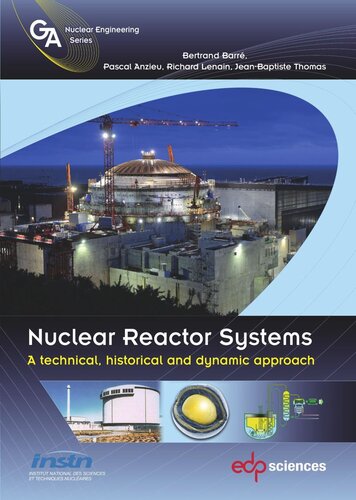

Most ebook files are in PDF format, so you can easily read them using various software such as Foxit Reader or directly on the Google Chrome browser.
Some ebook files are released by publishers in other formats such as .awz, .mobi, .epub, .fb2, etc. You may need to install specific software to read these formats on mobile/PC, such as Calibre.
Please read the tutorial at this link: https://ebookbell.com/faq
We offer FREE conversion to the popular formats you request; however, this may take some time. Therefore, right after payment, please email us, and we will try to provide the service as quickly as possible.
For some exceptional file formats or broken links (if any), please refrain from opening any disputes. Instead, email us first, and we will try to assist within a maximum of 6 hours.
EbookBell Team

4.3
48 reviewsThe evolution of nuclear reactors since the 1942 Fermi experiment can be described along the lines of natural history, with an initial flourish of uninhibited creativity followed by a severe selection process leading to a handful of surviving species, with light water reactors occupying most of the biotope today. The is book combines four approaches: A descriptive one. This gives an overview of the main strengths and weaknesses of the different reactor systems. A historical approach, from the 1940’s to nowadays, with an extrapolation to the near future. The LWR dominance being firmly established, what is the next step? An axiomatic approach. Starting with a set of long term criteria concerning the fuel cycle sustainability, a conceptual solution is established, and then a family of reactor systems is selected for development and qualifycation. A dynamic approach. In the early 2000s, the prevailing image combined a “nuclear renaissance”, a strong limitation of the greenhouse gases concentration and a dynamic growth of the world economy. Updating the strategy in the wake of the last decade events requires a sharper understanding of the driving forces as well as of the influence of the post-Fukushima safety framework on the design constraints. All the books of the “Génie Atomique” series have adopted an instructional approach. Initially intended for INSTN’s students, they can be greatly helpful to physicists and engineers involved in the development or operational aspects of nuclear power.